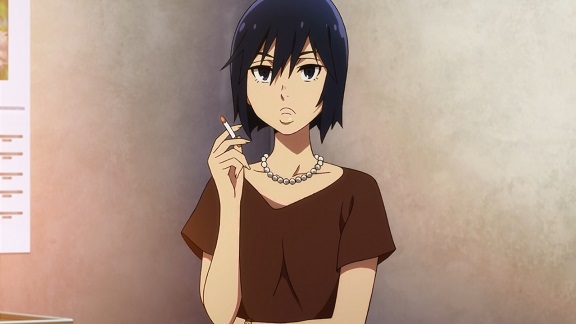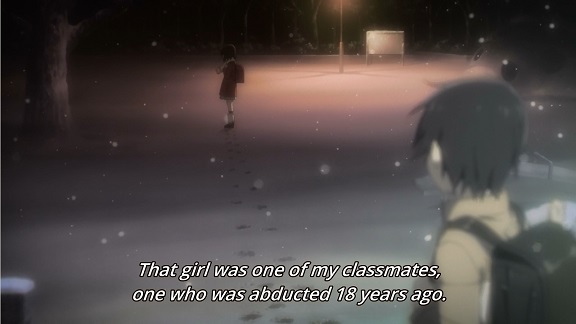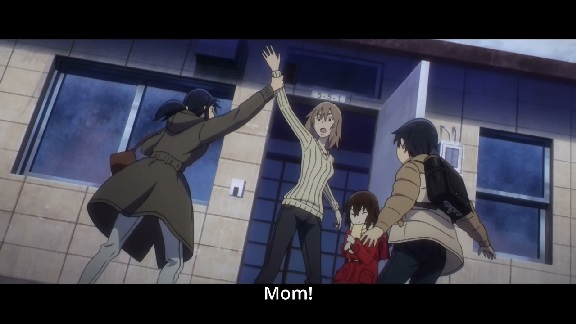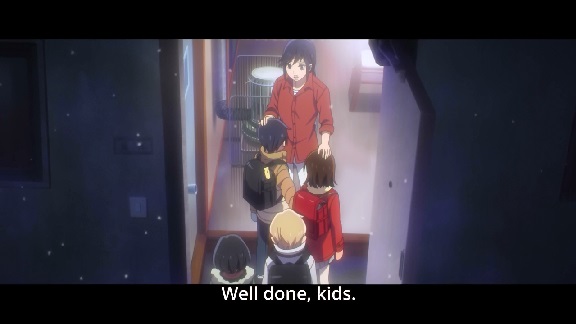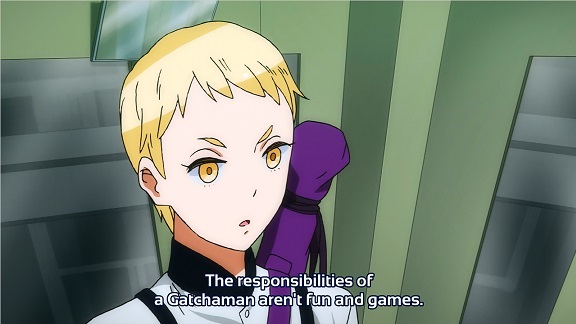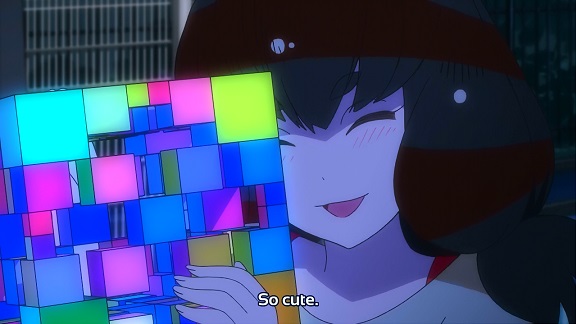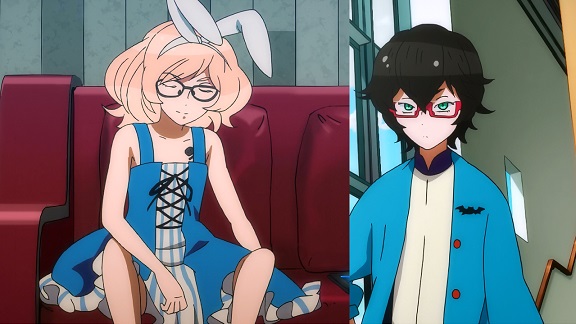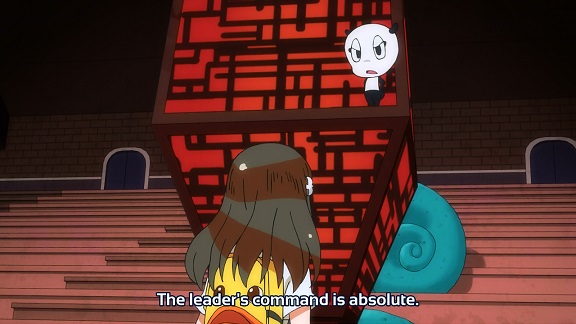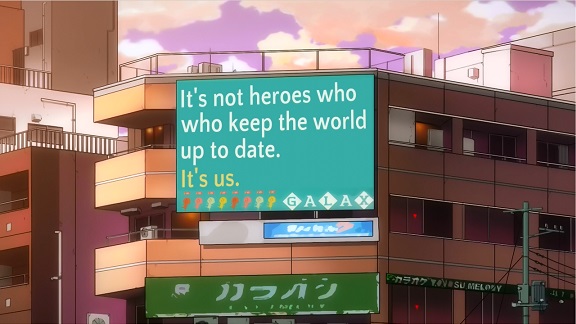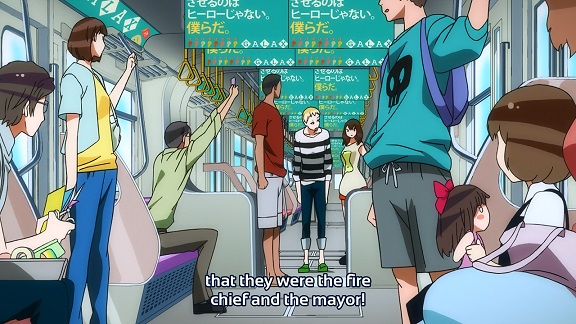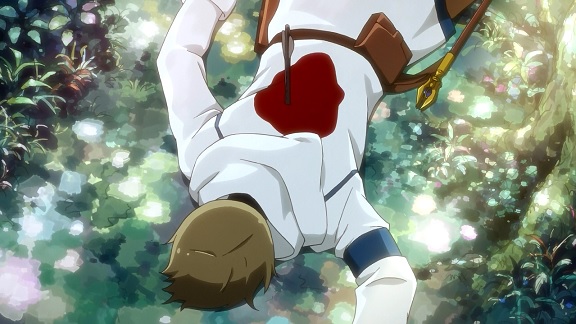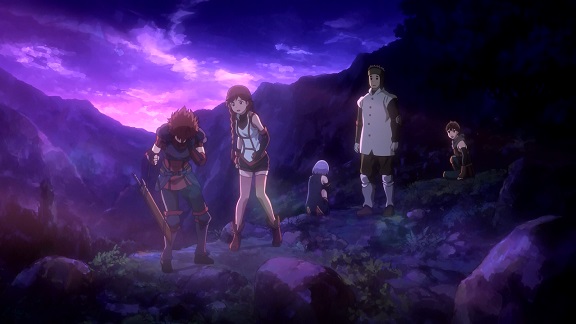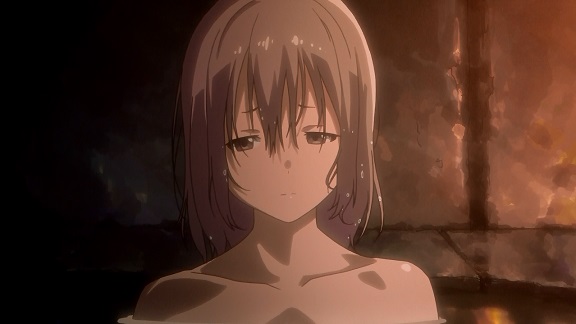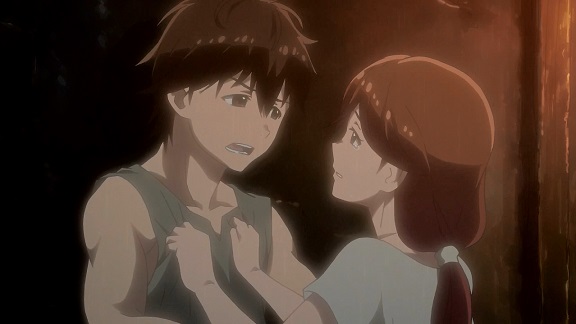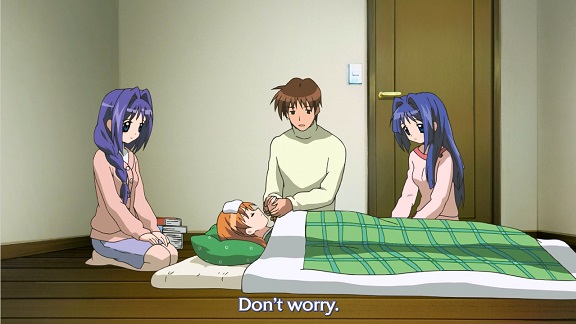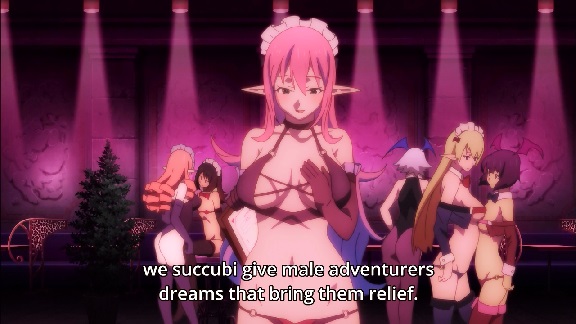
Episode nine of KonoSuba raises the question: what if you could pay a succubus to give you a wet dream, featuring the person(s), settings and deeds of your choice, with no worries about legality or morality, because after all it’s “only a dream”?
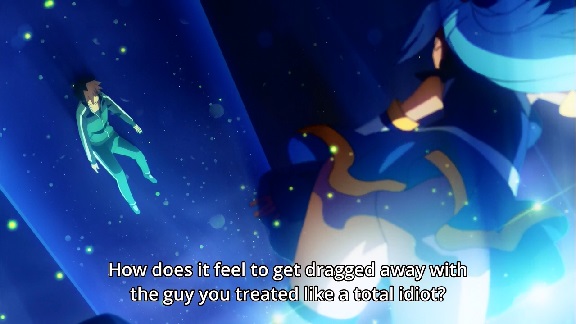
Backtracking slightly: Kono Subarashii Sekai ni Shukufuku wo!, KonoSuba for short, is another entry in the ever popular “nerd gets trapped in a RPGesque fantasy world” anime genre and, like Grimgar, it’s a bit of a deconstruction. Unlike Grimgar though it does it not by amping up the reality of what it would be like to be dropped in a fantasy world where you have to kill to survive, but rather by taking the piss of the genre and RPGs in general. So our hero Kasuma is not all that likeable, mainly out for himself and stuck with the goddess that reincarnated him into this world, who he dragged down with him out of pure spite when she was slightly too amused about the dumb way he died. They’re joined by Megumin and Darknes, respectively a mage with a fantasy complex specialising in explosion magic who only has the stamina for one explosion a day and a masochistic paladin who sexually harasses her opponents by imagining the lewd and embarassing things they’ll do to her once they defeat her. KonoSuba has done very well in creating humour out of the characters’ own flaws: they get what they deserve, with everybody treated equally (un)fair. Nobody is perfect, nobody is the designated chewtoy and ultimately they’re stuck with and deserve each other.
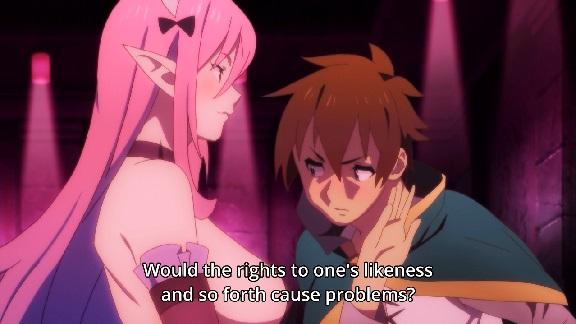
Most episodes are loosely dedicated to mocking one aspect or another of this subgenre and episode nine takes aim at the venerable element of fanservice and sexual wishfulfillment — not just common in this particular anime subgenre of course, but found everywhere. It does so in a typical KonoSuba way, by taking the idea of the succubus to its logical extreme and have them set up a business providing nice dreams to male adventurers to relief stress, for a small fee and some of their vitality. Kasuma being who he is, carefully examines the bait held before him for its legal and moral implications, all of which the succubus counters with that it doesn’t matter, it’s just a dream. Now is this just me or does this hint at some of the more questionable defenses of dodgy anime or manga? “It doesn’t matter, it’s not real”?

But if you thought that was a bit too on the nose, the next scene is worse. Kasuma returns home to find out the parents of one of his team mates have sent over a lot of high grade crabs and booze and the team’s having a party. He wants to join in, but comes to his senses when he remembers the warning the succubus had given him: don’t drink too much booze that you sleep too deep to dream. Yey as he looks at the happy faces of his friends, he considers giving up and join them — not. In the end, he rejects physical pleasure and companionship for the dubious comforts of a wet dream. If that isn’t direct commentary on a part of anime fandom that rejects the physical “3D” world in favour of “2D” fantasies, I don’t know what is.
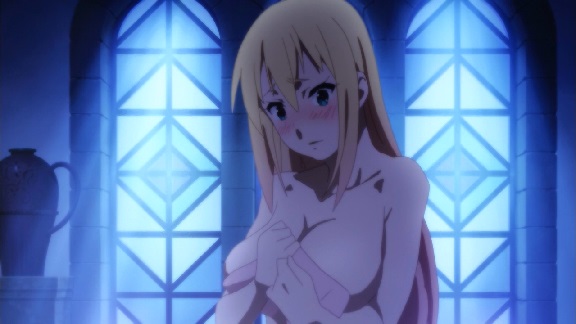
But does it work? the problem with making fun of immature sexual fantasies is that the end product could look a lot like an immature sexual fantasy itself, the same way most anti-war movies can’t help but glamourise war at least a bit. And with all the jiggling butts and tits on display — ugly though the art is this episode — you can’t help but think KonoSuba wants to have its cake and eat it too. Once the plot moves to the inevitable confusion between dream and reality when Darkness walks in on Kazuma in the bath, any pretense at satire is lost in favour of bog standard fanservice. Especially since the series had a fair bit of fanservice in it already, if only by teasing about how Aqua doesn’t seem to favour wearing panties. In the end therefore this mocking doesn’t quite work, the show undermining its own argument. Yet being even willing to try and have this argument wins it points from me. KonoSuba is a show that caught me by surprise from the start and even this flawed attempt at social commentary confirms it’s one of the best shows this season.
